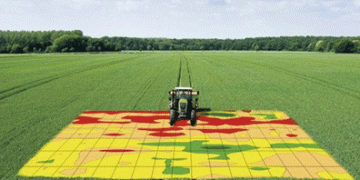Synchytrium endobioticum causes potato wart disease. Synchytrium endobioticum is an obligate parasite which does not produce hyphae but sporangia, which contain motile zoospores. Summer sporangia are thin-walled and short-lived. They are formed in the potato tissue and give rise to new zoospore infections. Resting spores (sometimes also referred to as winter sporangia, winter spores, resting sori or winter sori) are thick-walled and remain viable for extremely long periods of time even in the absence of a host. These can be produced throughout the growing season. They are released from decomposing warts into the soil. Diagnosis of S. endobioticum concerns both the plant, on which warts may have formed, and the soil, which may
carry resting spores.
Numerous pathotypes (races) have been described in S. endobioticum . These are defined by their virulence on differential potato cultivars. Pathotype 1(D1) is now rarely reported infecting potato in Europe because few potato cultivars are susceptible to it, apparently due to the availability of dominant resistance in the host. Other pathotypes are now reported to occur more frequently in Western Europe, and are particularly found in the rainy mountainous areas of Central and Eastern Europe. They also occur outside Europe (e.g. in Newfoundland, Canada and in the Asian part of Turkey). Resistance to these pathotypes is rare, so control is more difficult. Pathotypes other than 1(D1) are distinguished through differential virulence to specific potato cultivars, but otherwise seem to be more closely related to each other than to pathotype 1(D1). Internal measures recommended in EPPO countries require that pathotypes are identified.
The identity of summer sporangia or resting spores observed under the microscope can be confirmed by conventional PCR,
and real-time PCR. Conventional PCR is based on the internal transcribed spacer of the ribosomal DNA region (ITS) with the forward primer annealing to ITS1 and the reverse primer annealing to ITS2. The real-time PCR of van Gent-Pelzer et al. (2010) is based on ITS2. The real-time PCR of Smith et al. (2014) that is described here is based on small subunit (SSU) ribosomal
DNA (18S rDNA). The real-time PCR developed by Bonants et al. (2015) is based on a pathotype 1(D1)-associated single nucleotide polymorphism (SNP) identified using Complexity reduction of polymorphic sequences (CRoPS) analysis. When using potato wart material, an internal positive isolation control targeting the plant COX gene is used to monitor the effectiveness of DNA isolation. Pathotype 1(D1) can be distinguished from at least pathotypes 2(G1), 6(O1) and 18(T1) by real-time PCR.
Reference: PM 7/28 (2) Synchytrium endobioticum. EPPO Bulletin, 47: 420–440. https://doi.org/10.1111/epp.12441






